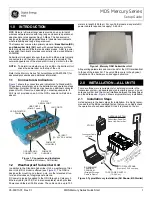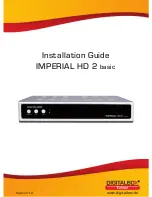
• IP 7000 BR
9
The terminals are each marked red (+) and black (–) .
Make sure the polarity is correct!
Connect the like coloured terminals . Otherwise
the sound quality will suffer . The strands of the
speaker single wire are marked with different colours
or shapes .
Split the single wire down to
approx . 30 mm on both ends and
strip approx . 10 mm of insulation
off of each cord . Twist the single
wire so that no strands are protrud-
ing .
Turn the connector terminal
24
counter-
clockwise until loose . Run the stripped
cable end into the now visible hole .
Close the terminal by turning it counter-
clockwise . The cable has now been
clamped in place .
Television/projector
You can connect a television set and/or projector to the
following outputs:
18
20
15
14
–
18 HDMI OUT
Digital picture and audio signals via a HDMI cable .
15 Y CB/PB CR/PR
Analogue component picture signal via a triple RCA
cable . Pay attention to the colour of the jacks (green, blue
and red) when connecting . Audio is emitted via the RCA
jacks
20
“AUX OUT” as stereo downmix .
14 VIDEO
Analogue picture signal (FBAS) via an RCA cable . The
audio is emitted via the jacks
23
“AUX OUT” in this case
as well .
You should preferably use the HDMI output
18
as only
the signals of HDMI inputs 1 and 2 are emitted here . The
HDMI inputs may not be used when connecting via one
of the other outputs .
Inputs for source devices
The receiver offers you two inputs for digital HDMI
picture and audio sources (HDMI 1 + 2) . An optical and
coaxial digital audio input and analogue audio input
(AUX IN) are also available .
You can also connect the audio output of your television
set to one of these audio inputs in order to listen to audio
from the receiver when you watch television shows . See
the operating instructions of your television set for more
information .
17
19
23 22
–
17 HDMI 1 and 2
You can connect a source device with a digital picture
and audio signal to each of these inputs . You will need a
HDMI cable for this .
Important
You can only use these HDMI inputs if the
playback device (TV or projector) is connected
via HDMI .
22 COAXIAL
You can connect the coaxial digital audio output of a
source device here . You will need a coaxial cable with
RCA plugs to do so .
23 OPTICAL
You can connect the optical digital audio output of a
source device here . You will need an optical cable with a
TOSLINK plug for this . Your source device requires either
an optical 3 .5 mm plug or a TOSLINK plug .
19 AUX IN
You can connect a source device with analogue audio
here . You will need a stereo RCA cable for this (L and R) .










































